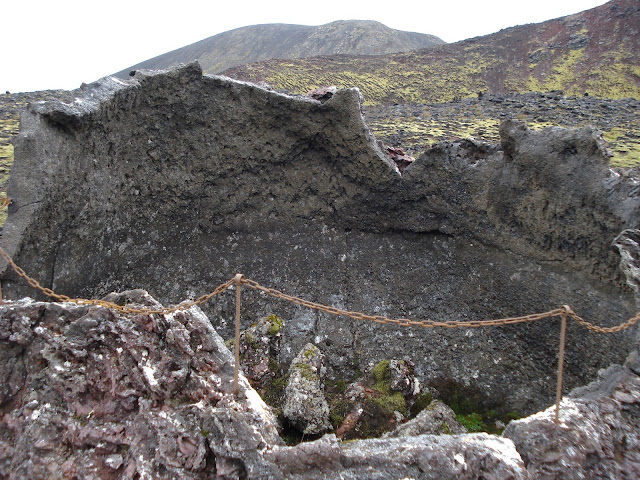Þrihnúkagigur, just outside Reykjavík, is a very special volcano. It's hollow. No-one is sure why. I think the consensus is that the magma that filled it around 4000 years ago may have drained back down through some loss of pressure, rather than erupting out of the top.
Since 2012 a tour company has been taking parties of visitors down inside it. Here a group is being lowered the 200 plus metres to the bottom in a specially designed lift.

 |
| Beautiful colours inside the cone |
 |
| Looking up to the mouth of the volcano |
 |
| A subsidiary crater nearby |
Here a party of visitors is being brought across the lava field to the volcano by their guide. Visiting is only allowed under tightly controlled conditions because of the fragility of the crater and the surrounding lava field and moss.
When I was there in late 2014 I was impressed by the care taken by the operator to contain the impact of this tourism, with guidance and monitoring by the Environment Agency. Because groups are accompanied by guides there is very little damage to the moss caused by people wandering off the path. Even inside the volcano, pathways and steps are made only from materials loose and ready to hand on the volcano floor - which can be put back if the operation is shut down. The toilets are of the composting type and all waste is removed for disposal elsewhere.
It's a fine example of how tourism can be sustainably managed when there is a will to do so. I only wish I could say the same more often in Iceland.
https://insidethevolcano.com/the-volcano/



